Earlier this month, I was lucky enough to attend the Final Muster of the Fourth Marine Division Association.
There are few words to describe what an experience that was (hence the full account intended for 1stbattalion24thmarines.com is delayed–stay tuned on that one). Meeting so many veterans all at once was just incredible, especially as the event was so emotionally charged. The Association was active for 68 years, with active reunions dating back to 1948, and reminiscing about past reunions was almost more prevalent than reminiscing about the war. At one time, nearly four thousand Fourth Division veterans packed reunions in Philadelphia, DC, and New York City; tales of running amok though Manhattan in the 1950s (when most of the vets were in their late twenties and early thirties) lit up the eyes of men now in their eighties and nineties. It was the end of their exclusive social club–some of the children and grandchildren have been attending these reunions all their lives–and watching those old Marines say goodbye to their buddies of nearly seventy years was heartbreaking. There were no illusions that, for many, this was the final goodbye.
I was supposed to attend with my good friend George Smith of A/1/24. We were going to make a few last connections, tie up some loose ends, and pitch a good last liberty in Jacksonville. Unfortunately, an illness struck the Smith family, and George was unable to attend, so I ended up as the lone representative of Able Company.
George, as some readers may know, served in the same platoon as my ancestor, 1Lt. Philip Emerson Wood, Jr. His squad leader, for a time, was Arthur “MuMu” Ervin, one of the three MIA cases that helped to launch this site. I was hoping to meet more veterans who knew Ervin–especially as his case progresses (more on this later). I was out of luck, but on a whim decided to ask after the other two 1/24 MIAs.
As luck would have it, both had friends at the reunion.
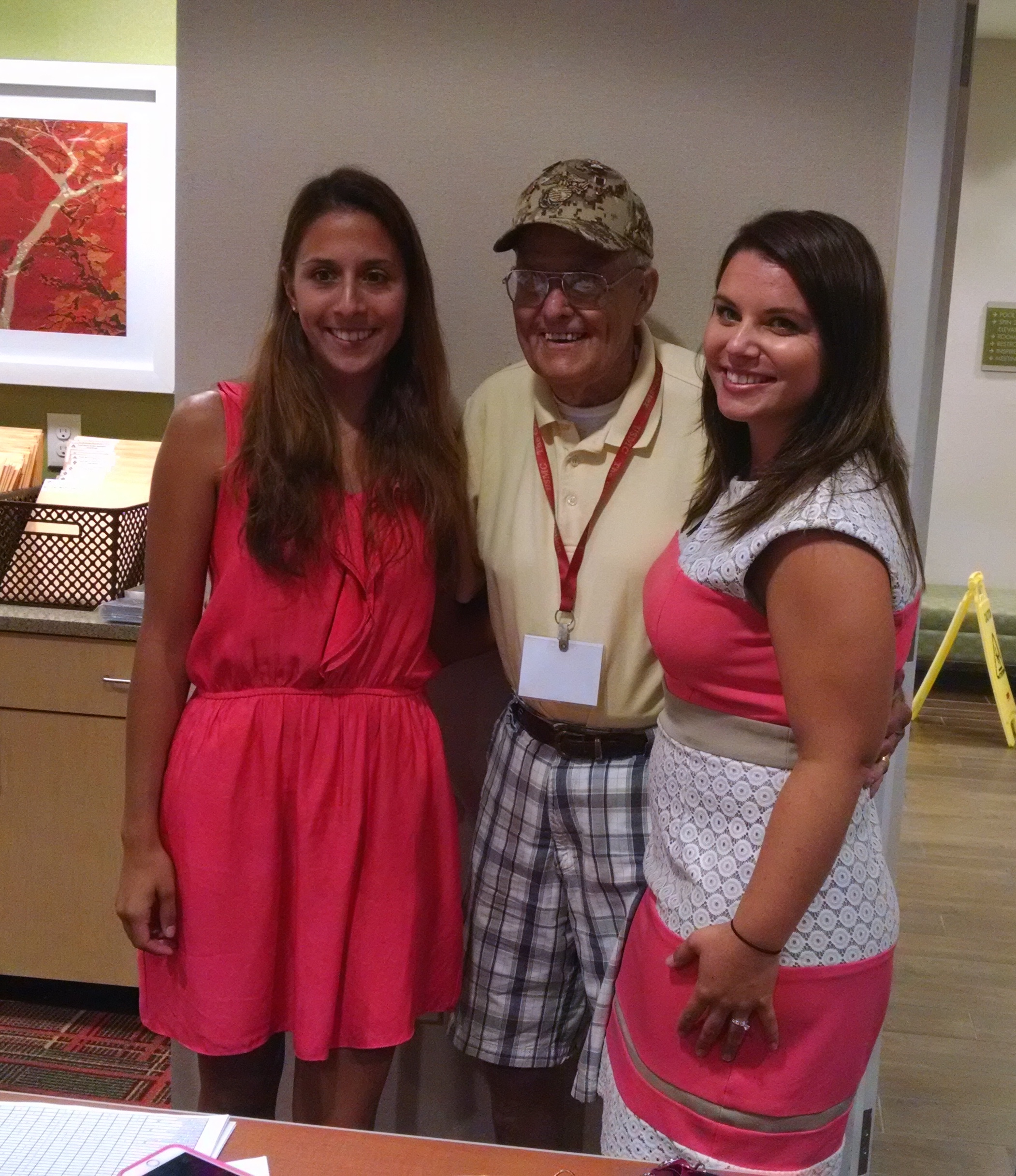
Robert Johnston hails from Boston, Massachusetts. He served with HQ/1/24 all through the war, and though officially trained as a quartermaster he worked as a jack-of-all-combat-trades, at times lugging components for an 81mm mortar, and fighting on the front lines as a rifleman. Mr. Johnston was shot in the leg (didn’t slow me down much), hit in the face by shrapnel (took my teeth out, these ones are fake), holds the Bronze Star (for what? for digging the best foxhole, or something) and received a field commission from corporal to second lieutenant. He remembers how his best friend was more afraid of rats than shellfire, jumped out of a rodent-filled hole on Saipan and directly into a random shot from General Saito’s artillery. And he remembers the name William Ragsdale.
“Ragsdale? Oh, sure. Great guy. You know, we never did find out what exactly happened to him–“
So he just disappeared?
“Yeah, it was the weirdest thing. One morning we went looking for him, and he was gone. We figured he went off to fight the war by himself or something. For years at these reunions we used to get together, someone would ask, ‘Whatever happened to Bill Ragsdale?’ He just took off someplace and we never saw him again.”
According to records, Corporal William Ragsdale vanished on June 28, 1944. There was no indication that he had been killed in action, he was simply Missing. And listening to Bob Johnston speak, I realized the weight of the word. Nobody knew what happened to Ragsdale. Nobody had seen it. He was there one evening; the next morning he was just gone, evidently without a trace. Which meant that, in all of those discussions at all of those reunions, there was always the hope that Ragsdale got himself evacuated, made it back home somehow, was still alive somewhere–maybe would be at the next reunion.
It would never happen; Ragsdale’s remains were discovered on July 5, 1944. The battalion and his buddies were long gone. He had no dog tags, no paperwork, nothing to give a clue to his identity–he could not even be identified as a Marine, so he was buried as Unknown X-6 in the Army cemetery. A Graves Registration worker carefully removed a gold wedding band from his hand, noting the inscription “Bill from Eloise” before placing it in a Red Cross bag and shoveling dirt into the grave. Bill Ragsdale was never going to make it to a reunion. He has been buried in Manila since 1948.
But Bob did not know this, and now I would have to tell him. It’s an unexpected and unpleasant shock when this happens. Those of us interested in this line of research go into it hoping to close doors and heal wounds–but when you dig into the past, you don’t know what you’ll turn up. The metaphor about letting some things stay buried seems particularly apt. I still remember the day I mentioned to George that “MuMu” was MIA, thinking George knew this, being utterly wrong, and stammering through the explanation as he just stared. Even if Bob assumed that Ragsdale had died in the 71 years between the disappearance and our conversation, I was going to be the one to confirm that he’d never made if off Saipan.
There isn’t an easy way to do this, ever. I told Bob about Ragsdale’s designation as MIA. How he’d been found and buried by friends, but without his name. How we’d worked to track him down, and how that gold wedding ring helped clinch our supposition. And how we knew where he was, and how it was only a matter of time before he came home.
Bob quietly absorbed the news.
“We always wondered what happened to Ragsdale,” he finally said. “Thank you for letting me know.”
Two days later, I was seated at the Camp Lejeune Officers’ Club, full of steak and apple crumble, listening to a general address the assembled veterans and families about the Fourth Marine Division on Iwo Jima. During the course of the week, veteran families would occasionally “adopt” me–the youngest solo attendee–and I met so many lovely people that I never had to attend an event alone. My guardians for the banquet were the Allen family.

Horace Allen–“Al” if you please–is a Marine from C/1/24. Once upon a time, Corporal Allen toted a flamethrower as “the youngest NCO” in Company C; in the years since he’s been just about everywhere he can go on a succession of beloved motorcycles. (He’s quick to mention that he still rides and, with his 91st birthday coming up, has no intention of giving it up.) Al’s memory is as sharp as the Eagle, Globe and Anchor tattoo on his forearm, and while he’s told his share of hair-raising stories from combat, he keeps them pretty close to his chest. When you talk to Al, you talk on his terms.
This being the final night, though, I didn’t want to drag up bad memories. Al is originally from Long Island and now lives in Florida, but his accent is straight Green Mountains. When we first spoke on the phone in 2014, he mentioned spending time as a motorcycle cop in Pomfret, Vermont. Pomfret is a tiny town of less than a thousand, but happens to lie adjacent to Woodstock, which is where my mother’s family comes from. Much to our shared delight, we found we could rattle off the names of local places–Suicide Six, Mount Tom, the Kedron Valley Inn, Fletcher Road–and had an immediate rapport. Al could even visualize the barn where the Gilletts kept their horses, and where I played many times as a child. We picked the topic up again as we stood at the bar, and when the chow call came down I figured we were done. Not so–as I waited in line to enter the banquet hall, Al came barreling down the waiter’s corridor. “Go sit yourself down at Table #1!” he barked, hustling past on the trail of his new favorite sergeant major.
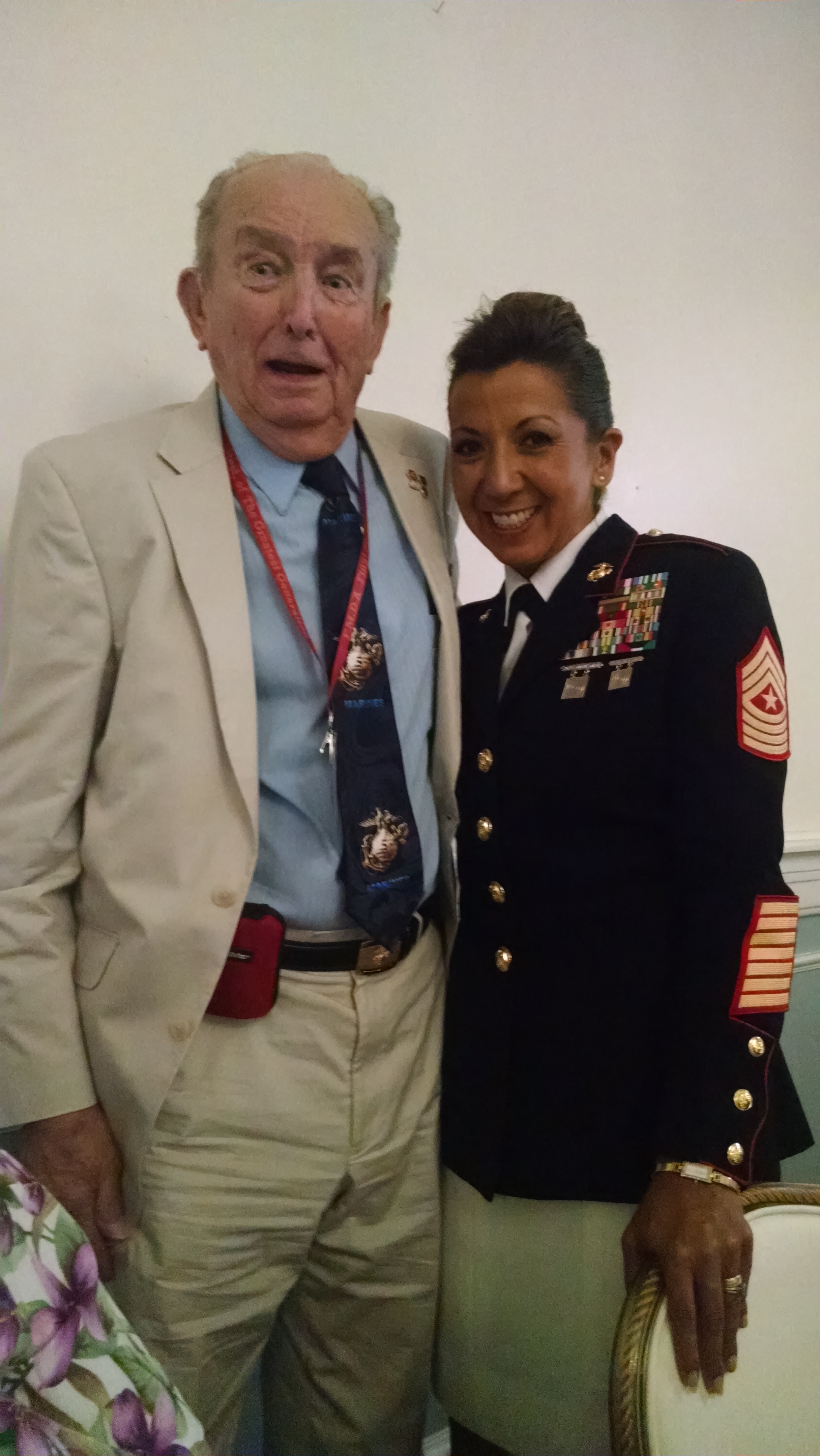
Orders are orders, and I had an excellent time with the Allen family. Al himself was in good spirits, and kept leaning over his wife to shout another story across the table. Almost getting fragged on Saipan. Crashing his motorcycle in New York City. Collaring the inebriated at the Tunbridge Fair, then sending them through town on a hayrick. And somewhere in there, the last name Thompson came up.
Robert Thompson was not a new topic. Unlike Ragsdale, there was no open question about Thompson; Al knew he was dead. “We lost him on Saipan,” he said on our phone call in 2014. When I mentioned the search for his remains, Al merely grunted. “Okay. Well, thanks,” and the conversation ended shortly thereafter. Though the topic was on the tip of my tongue, we hadn’t spoken about Thompson all week. Here was the chance.
I remember you mentioning Thompson, last year on the phone. You knew him pretty well, then?
“Yep. From Brooklyn, not too far from me. I seen him get hit.”
…really?
I’ve been studying First Battalion, 24th Marines for so long that I now can call up a pretty good mental record of events without my computer. I’m not sure if this is a good thing, or evidence of some sort of obsessional disorder–probably the latter, but I figure it’s for a good cause. Something didn’t square right with this statement, since Al was evacuated about a week before Thompson went missing. So how could he have seen Thompson go down?
“He went down, and we had to fall back,” Al said as we stood to collect our belongings. “I don’t know that anybody got to him. I was just about blinded by that point, anyway.”
“That point” was D+3 on Saipan, June 18 1944. After advancing for three hot days and defending against infiltration for two sleepless nights, 1/24 hit the limits of their endurance. Enemy artillery stalled an afternoon advance, and in a unique and horrible occurrence, Japanese tanks charged into the battalion. It was one of the few times that 1/24 ever had to give ground in the face of a counterattack, and while the brunt fell upon B/1/24, Al’s company was brought up short as well. And according to Al, Bobby Thompson was hit at the farthest point of the company’s advance. In the ensuing withdrawal, Thompson was left behind.
He would not be reported as missing for a full week.
25 June was a quiet day on Kagman Peninsula. The battalion moved about, investigating the tiny villages and abandoned Japanese emplacements that dotted the flat ground, before settling into comparatively comfortable foxholes, far from the front line. The only casualty of the day was a mess sergeant from Company A who sprained his ankle–possibly, according to one memoir, while chasing down a trio of loose pigs for dinner. A PFC, wounded three days prior, died of his wounds aboard a hospital ship. And Bobby Thompson was MIA.
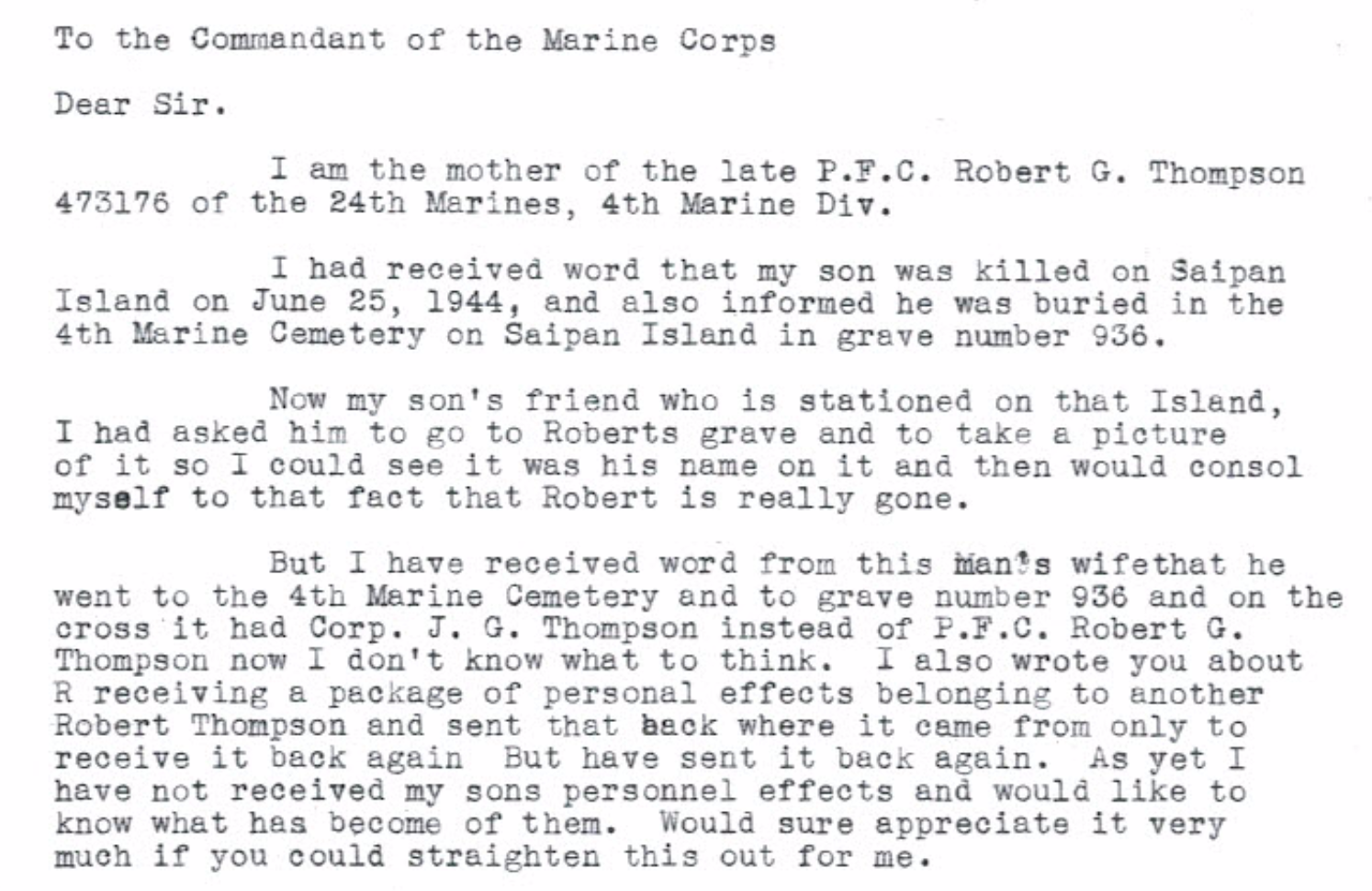
Could it be that Thompson’s status was not known for a full week? If the only eyewitness, Corporal Allen, was long gone, it may have seemed that he truly had disappeared–or at the very least, been wounded and taken to the rear. D+10 was the first breather the battalion had on Saipan–perhaps the enterprising clerks (Ragsdale among them) took the chance to square their muster roll against the actual number of men present for duty. Or perhaps Al was mistaken, after all.
After talking with him, though, I think he knows what he saw. It squares with what happened to his unit that day. And records were notoriously hard to keep in the field.

Like Ragsdale, Thompson was found by an Army graves registration team. Coincidentally, both Marines were buried on the same day, at the same time, virtually side by side. And, like Ragsdale, both are currently in Manila, awaiting the final verdict on their identities.
Thompson’s day may be coming soon. Thanks to the efforts of Ted Darcy at WFI, Bobby Thompson’s dental chart has been verified as a match for the remains. I managed to find a relative, his niece, who confirmed her identity and said that her grandmother wore a locket with Bobby’s picture every day, hoping he would come through the door. The only question remaining is when.
I gave this information to Al as we lined up to board the busses that would take us to the hotel. The week was over. In the morning, we’d all be heading back to our homes.
It may be that Al and I will never again meet face to face. I hope we will. But if that’s not in the cards, then I’ll remember that last moment, telling him that someone finally got to his friend.
He shook my hand firmly and looked me square in the eye.
“Okay,” he said, quiet and sincere. “And thanks.”



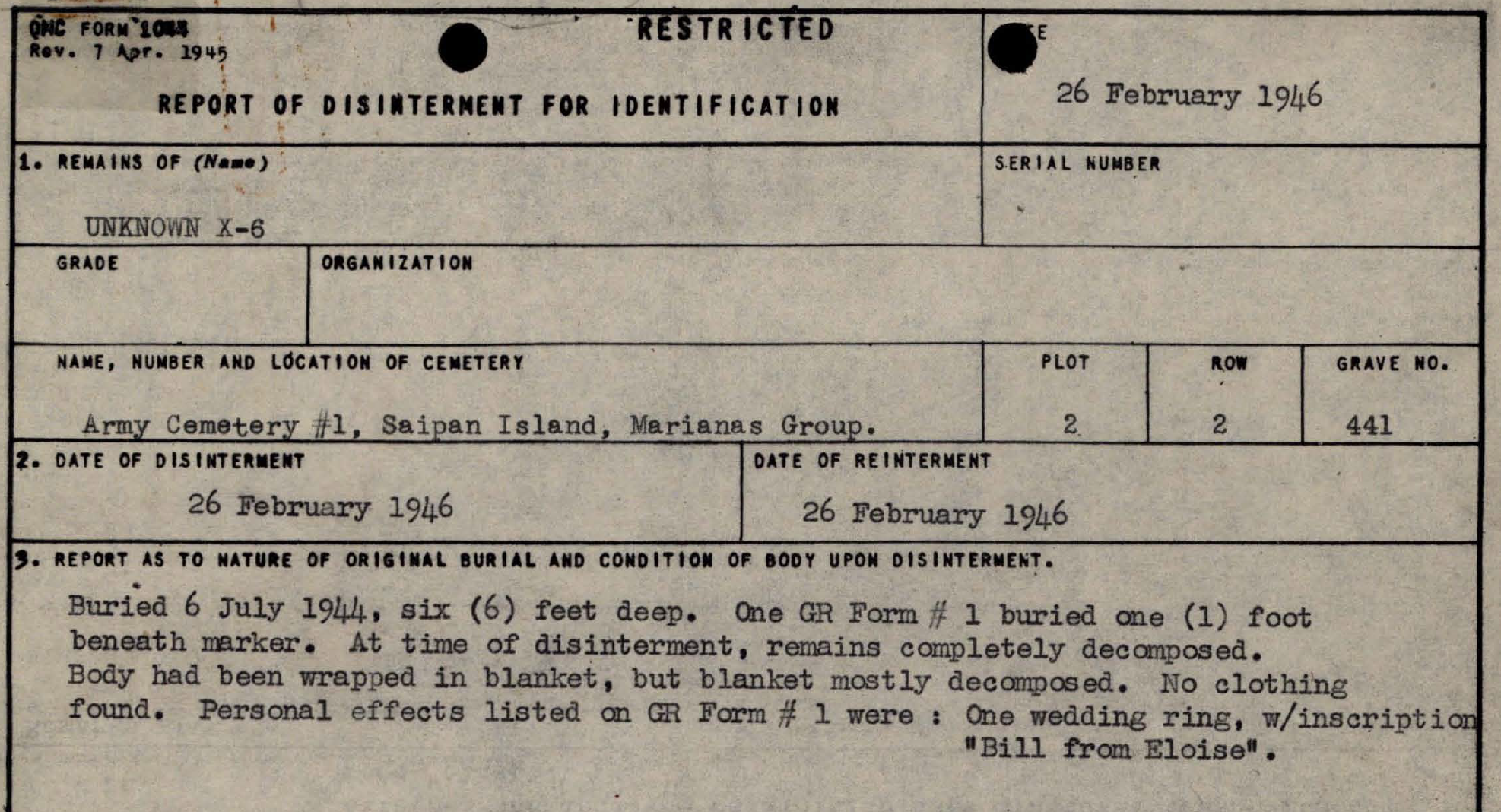

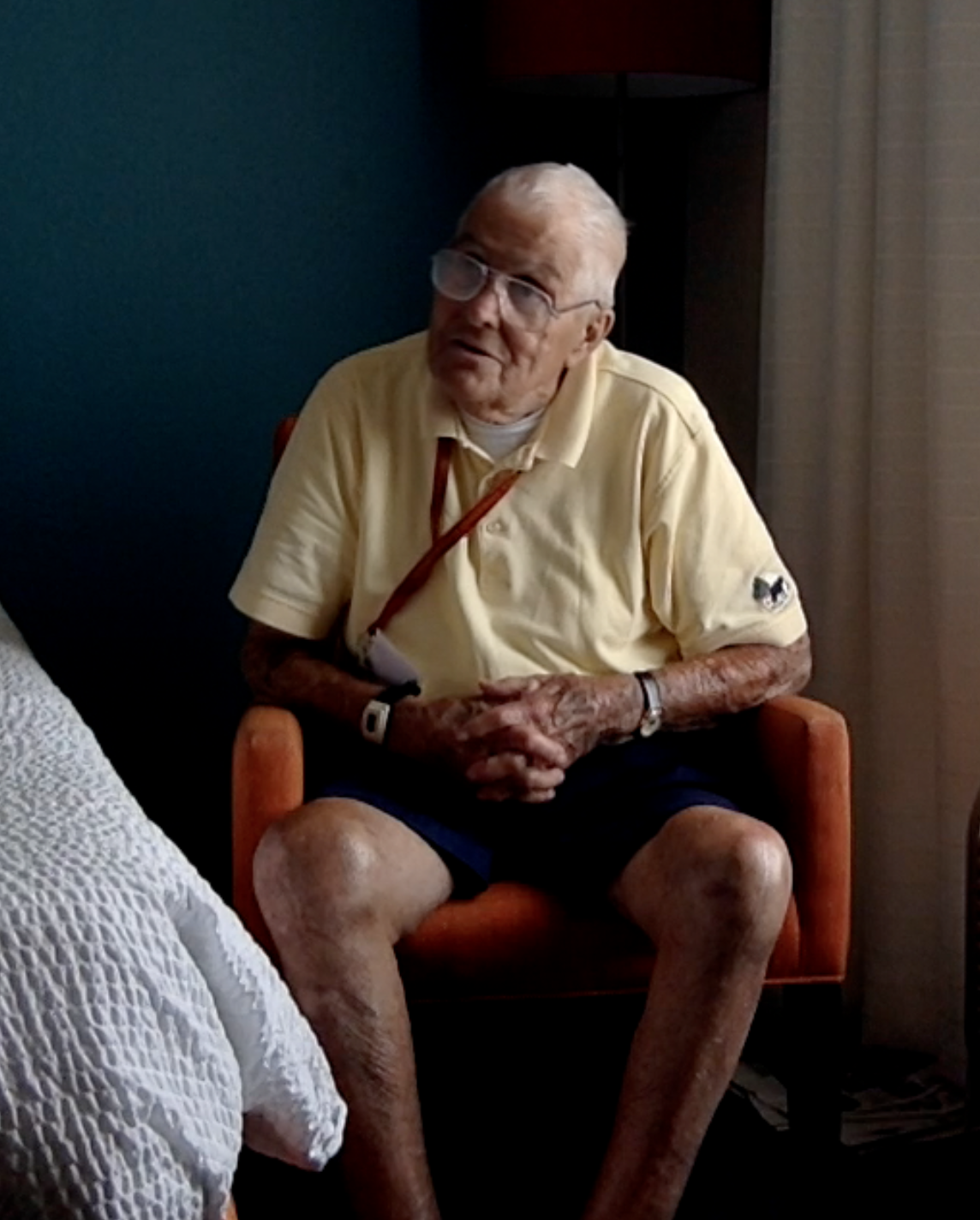


Heartbreaking stories; but thanks for making them known.
You amaze me.
I had never had the chance to read this site before, and just after *one* post, I am absolutely enthralled and humbled by the amount of work and time you put into finding out about these men and telling their stories — and consequently, the stories of those around them, too. I’m looking forward to showing your work to my father, knowing that no doubt he’d love the kind of passion you’ve put into this. Phenomenal!
I stumbled into your site almost by accident, but not quite. My mothers companion in her later years was a 1/24th able co. vet. Thanks to the miracle of the internet the experiences of these fellows will never be lost.
Fine job, my friend. Keep up this great work. If I can contribute in some way, I will not hesitate.
Hi James, thank you for the kind words! I’d welcome your help. Will send you a separate email.
Cheers!
Geoffrey
Pingback: Memorial Day: the story repeats – Missing Marines